- Главная
- Разное
- Бизнес и предпринимательство
- Образование
- Развлечения
- Государство
- Спорт
- Графика
- Культурология
- Еда и кулинария
- Лингвистика
- Религиоведение
- Черчение
- Физкультура
- ИЗО
- Психология
- Социология
- Английский язык
- Астрономия
- Алгебра
- Биология
- География
- Геометрия
- Детские презентации
- Информатика
- История
- Литература
- Маркетинг
- Математика
- Медицина
- Менеджмент
- Музыка
- МХК
- Немецкий язык
- ОБЖ
- Обществознание
- Окружающий мир
- Педагогика
- Русский язык
- Технология
- Физика
- Философия
- Химия
- Шаблоны, картинки для презентаций
- Экология
- Экономика
- Юриспруденция
Что такое findslide.org?
FindSlide.org - это сайт презентаций, докладов, шаблонов в формате PowerPoint.
Обратная связь
Email: Нажмите что бы посмотреть
Презентация на тему The Circulatory System
Содержание
- 2. PLANThe circulatory system At the heart of the circulatory systemDisorders of the Circulatory System
- 3. The Closed Circulatory SystemAll of the body’s
- 4. The circulatory system is an organ system
- 5. The blood vessels that carry the oxygen-rich
- 7. This system may be seen strictly as
- 8. Two types of fluids move through the
- 10. Circuits
- 11. Disorders of the Circulatory SystemAnemia - lack
- 13. Systemic circulation is the circulation of the
- 14. Скачать презентацию
- 15. Похожие презентации
PLANThe circulatory system At the heart of the circulatory systemDisorders of the Circulatory System
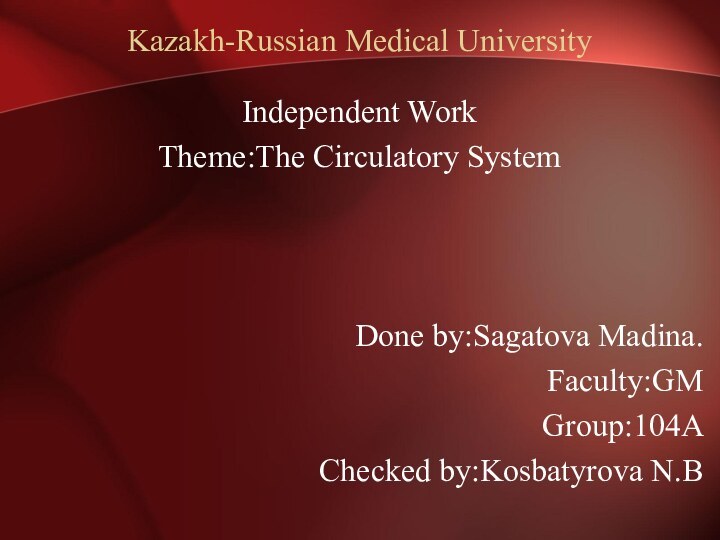
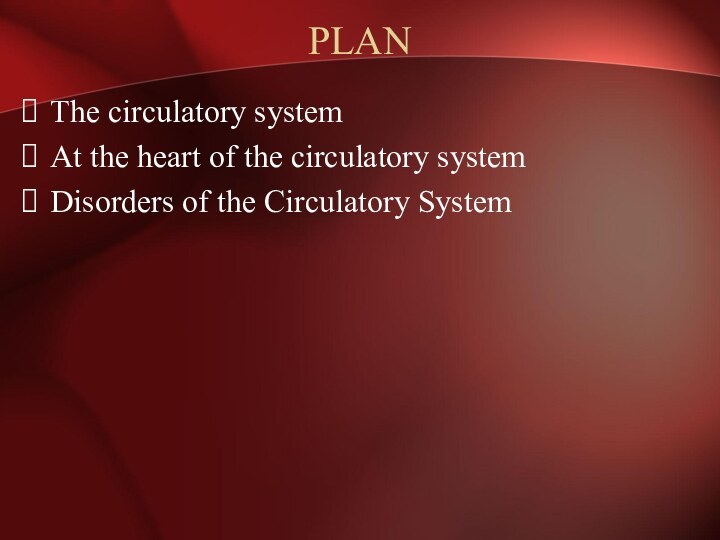
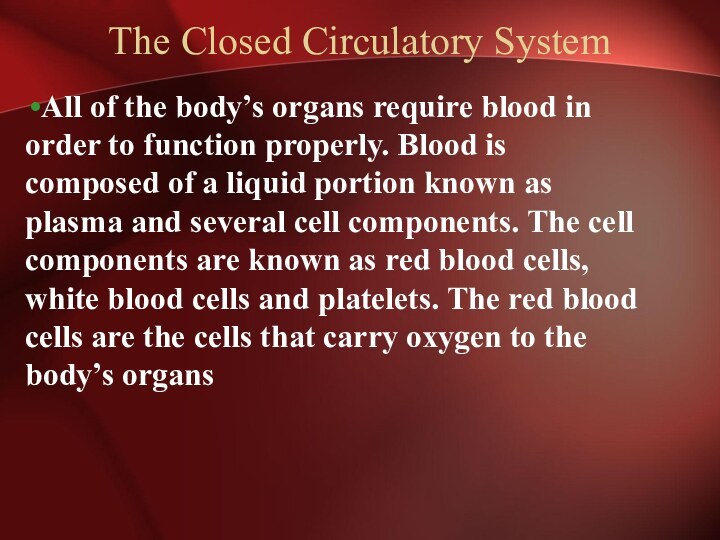
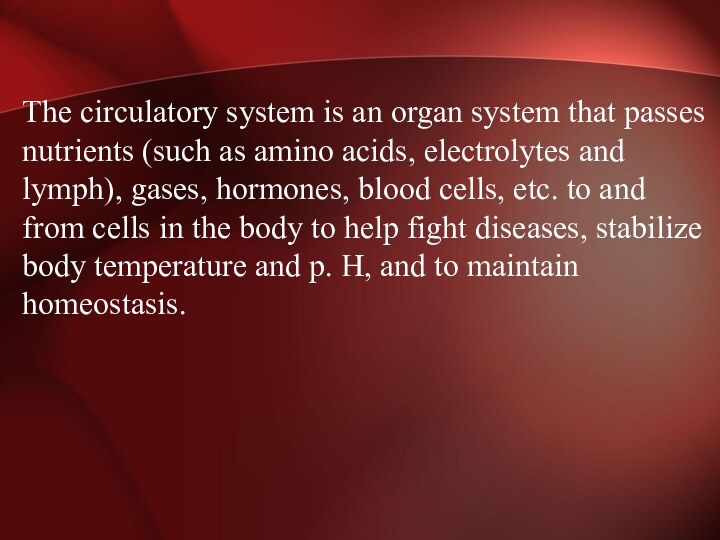
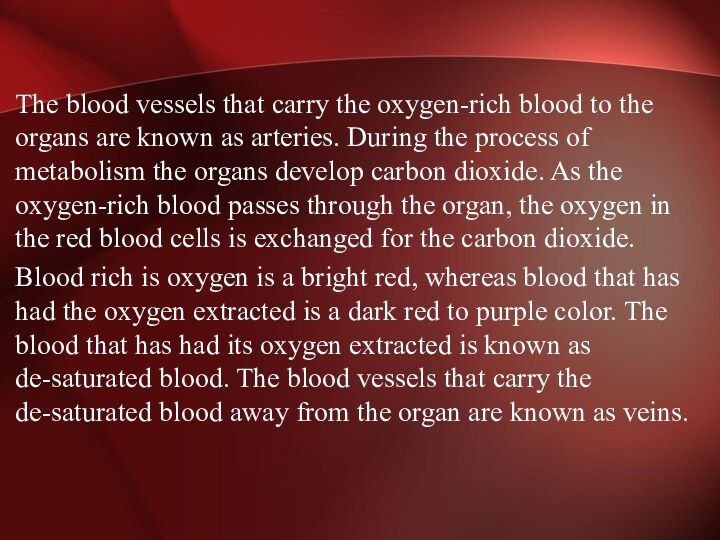
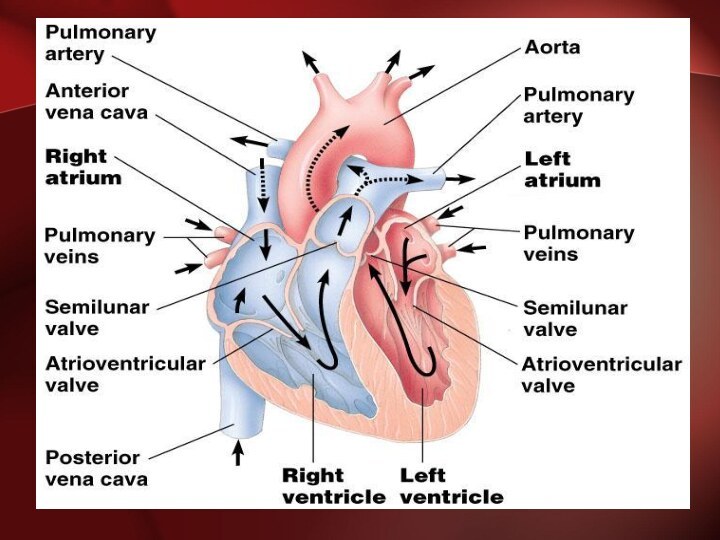
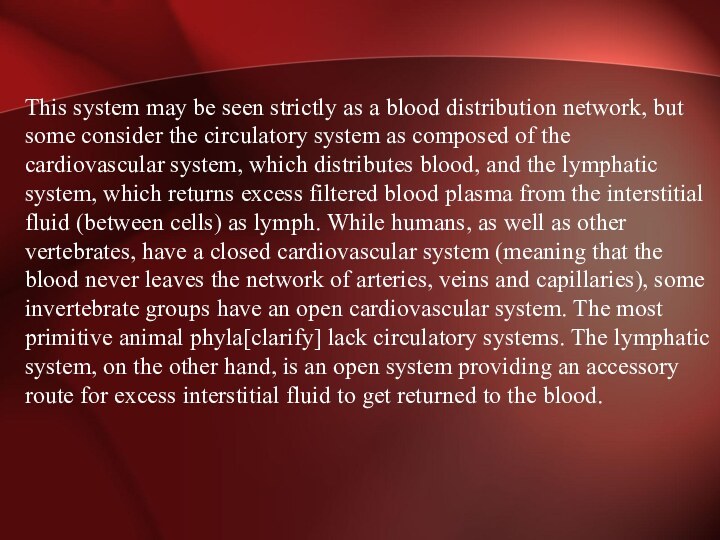
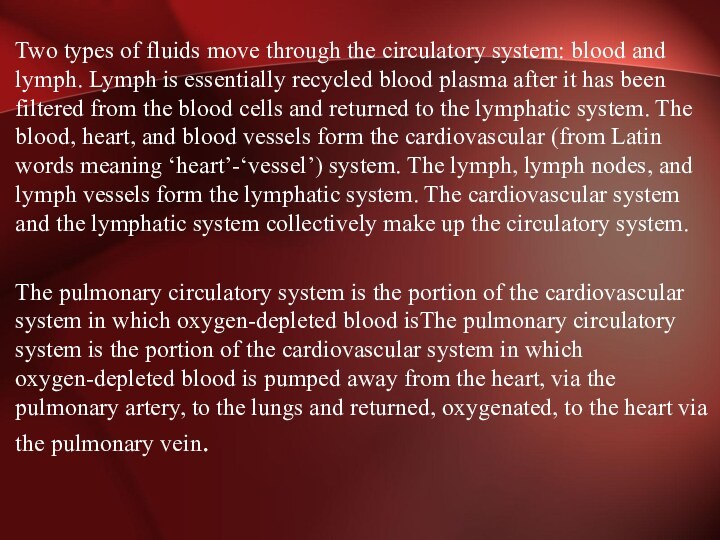
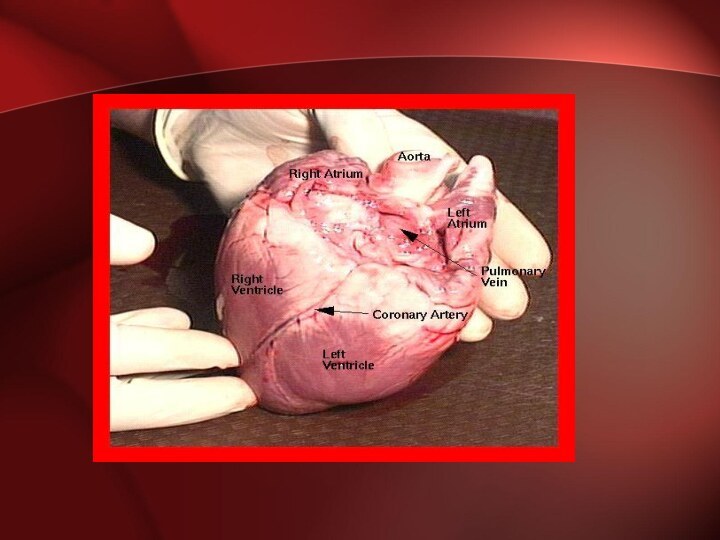
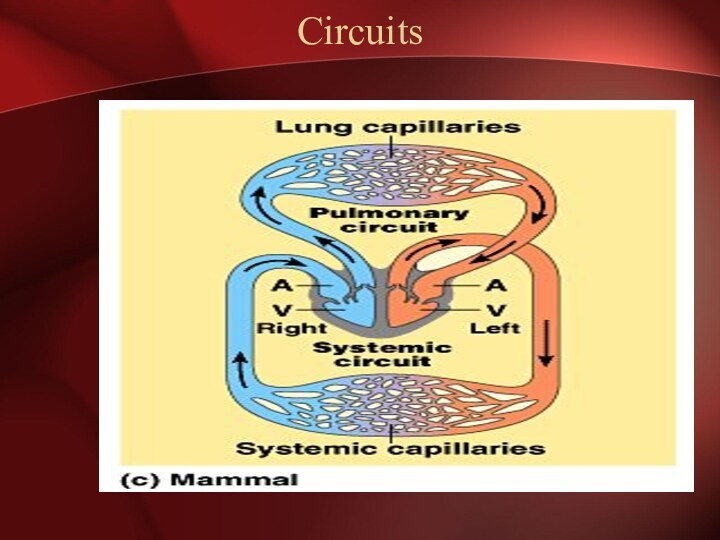
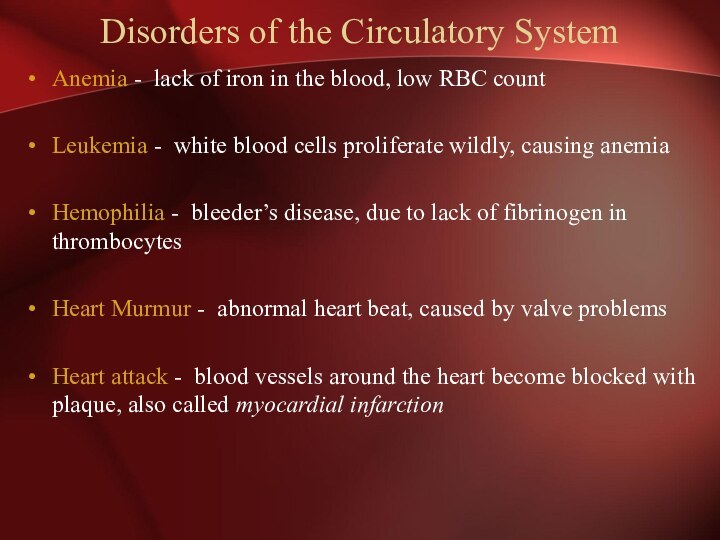
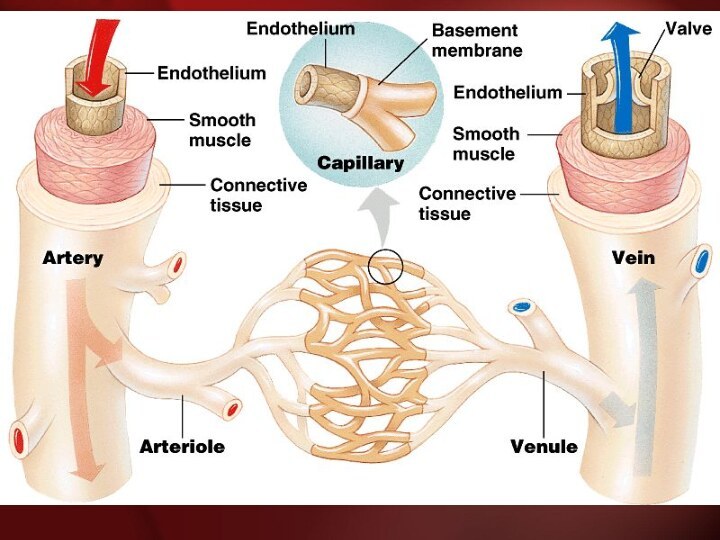
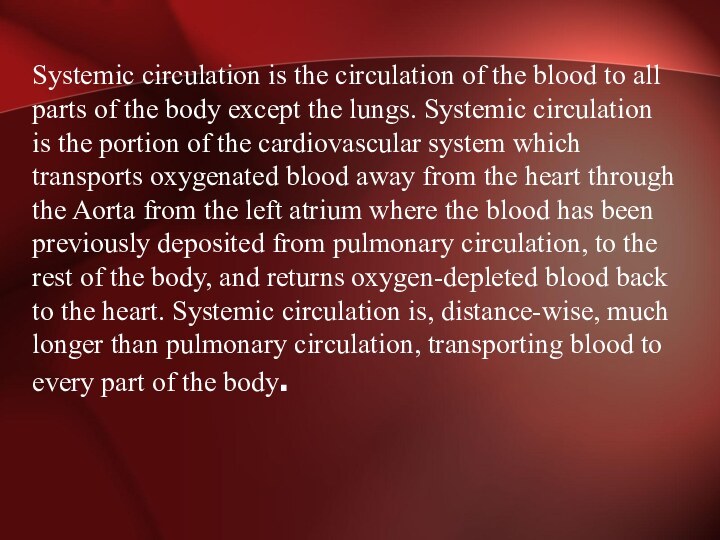
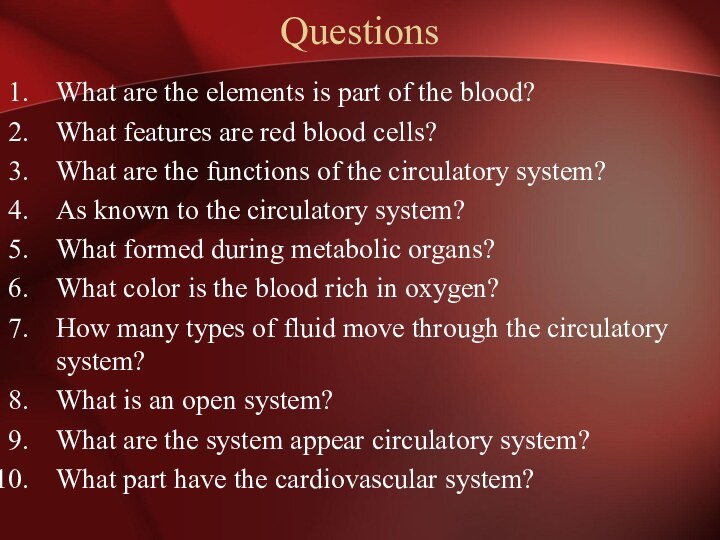
Слайд 3
The Closed Circulatory System
All of the body’s organs
require blood in order to function properly. Blood is
composed of a liquid portion known as plasma and several cell components. The cell components are known as red blood cells, white blood cells and platelets. The red blood cells are the cells that carry oxygen to the body’s organs
Слайд 4
The circulatory system is an organ system that
passes nutrients (such as amino acids, electrolytes and lymph),
gases, hormones, blood cells, etc. to and from cells in the body to help fight diseases, stabilize body temperature and p. H, and to maintain homeostasis.
Слайд 5
The blood vessels that carry the oxygen-rich blood
to the organs are known as arteries. During the
process of metabolism the organs develop carbon dioxide. As the oxygen-rich blood passes through the organ, the oxygen in the red blood cells is exchanged for the carbon dioxide.Blood rich is oxygen is a bright red, whereas blood that has had the oxygen extracted is a dark red to purple color. The blood that has had its oxygen extracted is known as de-saturated blood. The blood vessels that carry the de-saturated blood away from the organ are known as veins.
Слайд 7
This system may be seen strictly as a
blood distribution network, but some consider the circulatory system
as composed of the cardiovascular system, which distributes blood, and the lymphatic system, which returns excess filtered blood plasma from the interstitial fluid (between cells) as lymph. While humans, as well as other vertebrates, have a closed cardiovascular system (meaning that the blood never leaves the network of arteries, veins and capillaries), some invertebrate groups have an open cardiovascular system. The most primitive animal phyla[clarify] lack circulatory systems. The lymphatic system, on the other hand, is an open system providing an accessory route for excess interstitial fluid to get returned to the blood.Слайд 8 Two types of fluids move through the circulatory
system: blood and lymph. Lymph is essentially recycled blood
plasma after it has been filtered from the blood cells and returned to the lymphatic system. The blood, heart, and blood vessels form the cardiovascular (from Latin words meaning ‘heart’-‘vessel’) system. The lymph, lymph nodes, and lymph vessels form the lymphatic system. The cardiovascular system and the lymphatic system collectively make up the circulatory system.The pulmonary circulatory system is the portion of the cardiovascular system in which oxygen-depleted blood isThe pulmonary circulatory system is the portion of the cardiovascular system in which oxygen-depleted blood is pumped away from the heart, via the pulmonary artery, to the lungs and returned, oxygenated, to the heart via the pulmonary vein.
Слайд 11
Disorders of the Circulatory System
Anemia - lack of
iron in the blood, low RBC count
Leukemia - white
blood cells proliferate wildly, causing anemiaHemophilia - bleeder’s disease, due to lack of fibrinogen in thrombocytes
Heart Murmur - abnormal heart beat, caused by valve problems
Heart attack - blood vessels around the heart become blocked with plaque, also called myocardial infarction





























